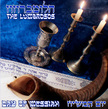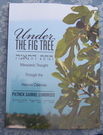In him was life, and the life was the light of men. The light shines in the darkness, and the darkness has not overcome it. The true light, which enlightens everyone, was coming into the world.
The first creation mentioned in the first chapter of the Book of Genesis is the primeval light. The Hebrew gives two different words for ‘light’ in the Book of Genesis: the ‘or’ in verse three referring to the primeval Light of the beginning of creation, and the ‘ma’or’ referring to the two lights in the firmament in verse fourteen.
The primeval Light was the beginning of God’s creation. Without it nothing was created that was created. The Hebrew word translated as ‘beginning’ comes from the word ‘rosh’, or ‘head’. In Hebraic understanding, the beginning is the head like the engine is the beginning/head of a train. It leads the rest and without it nothing goes anywhere. It works also with the idea of the head of a snake that pulls the rest of his body. Yeshua introduced Himself to the Laodicean congregation as the ‘Beginning of God’s creation’ Revelations 3:14), the ‘Head’ without which nothing else moves nor exists.
John’s introduction of Yeshua mirrors the Genesis’ account of creation. Whereas the ‘Word’ referred to by the Aramaic ‘Memrah’ in Jewish literature, existed with the Almighty as His Executive Agent, It revealed itself at the beginning, or the ‘head’ of creation as the Light, the Light by which everything else would be done. How fitting this is with the account of John who from His studies under the sages of Israel had understood what they said by the Talmudic statement, “God said ‘let there be Light,’ to reveal that God will ultimately illuminate Israel with the Light of Messiah”.
This was John’s hinted message embedded in the format of his introduction. He was mirroring the text of the first chapter of Genesis. John wanted to reveal that Yeshua was the incarnation of that Messianic primeval Light. God revealed the Light in the very beginning of creation; He revealed a light provoked phenomenon at another beginning through Noah’s rainbow, and finally revealed It as a human 2,000 years ago fulfilling the promise made in Mt. Sinai that God will come live among His people (Exodus 25:8).
As we try to do things in our own effort, as we attempt to lift ourselves up by our own boot straps by trying to change our environment, may we learn to realize that nothing is done without the Light of Messiah; He is the ‘Beginning’, the ‘Head’ without which nothing else is done; by Him and Him only can anything be done. He pulls and as we yield to His command we let ourselves be pulled.
May we learn to be fully satisfied simply basking in the Light of His greatness and beauty, solely obeying His commands. Who knows if we do, it may actually change the world to the better!
 RSS Feed
RSS Feed


